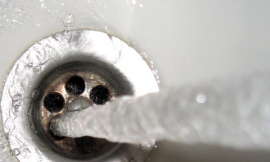
Did you know that mold can start to grow on damp surfaces within just 48 hours? If you're gearing up to store your washing machine—or if you’ve temporarily displaced it—taking steps to prevent mold is essential! Imagine discovering your washing machine covered in mildew after being tucked away for months—it’s a nightmare! In this article, we’ll dive into the best practices for storing a washing machine, fully equipped with strategies to keep mold at bay. Let’s ensure your appliance stays in tip-top shape and ready for action whenever you need it!
Understanding Mold Growth in Washing Machines
Mold in washing machines can be a frustrating problem for many homeowners. It's essential to understand how mold develops in these appliances. Mold thrives in damp environments, and washing machines are often the perfect breeding ground because they stay moist after a wash cycle.
Several environmental factors contribute to mold growth. High humidity levels, warm temperatures, and lack of airflow can create ideal conditions for mold spores to flourish. This isn't just an aesthetic concern; preventing mold is crucial for both health and appliance longevity. Mold can cause unpleasant odors and can potentially lead to health issues for those with allergies or respiratory conditions. Additionally, mold growth can damage the internal components of the washing machine, leading to costly repairs.
Preparing Your Washing Machine for Storage
If you're planning to store your washing machine, it's crucial to follow some guidelines for cleaning it beforehand. Start by removing all items from the drum and giving it a thorough clean. A mixture of vinegar or baking soda can work wonders for a deep clean, helping to eliminate residues and odors.
Once the cleaning is done, it's time to focus on the hoses. Disconnecting and draining them is vital to prevent any leftover moisture from becoming a breeding ground for mold. While you're at it, inspect the machine for any leaks. Addressing these repairs before storage can save you headaches down the line.
Choosing the Right Storage Location
How you store your washing machine matters just as much as how you clean it. Selecting an ideal storage environment involves considering temperature, humidity, and ventilation. Keeping the machine indoors is generally better than leaving it outdoors because it protects against extreme weather conditions and potential water exposure.
Moreover, a controlled indoor environment can prevent the appliance from suffering damage due to temperature fluctuations, which can affect its integrity over time.
Utilizing Protective Materials
To ensure your washing machine remains in good condition during storage, utilizing protective materials can help tremendously. Covering the machine with tarps or specialized appliance covers offers an extra layer of protection against dust and moisture.
Moreover, placing desiccants and moisture absorbers near the machine can reduce humidity levels, thus staving off mold growth. It's also a smart idea to keep the appliance off the ground, perhaps using pallets or other raised platforms to avoid any water damage.
Regular Maintenance During Storage
Even while your washing machine is in storage, regular maintenance is essential. Setting a schedule for routine checks can help you keep an eye on the appliance and catch any potential issues before they become significant problems.
During these checks, look for signs of moisture or mold growth. Occasionally testing the machine can also ensure it's still functional and ready for use when you need it again.
Preparing for Reinstallation
When the time comes to reinstall your washing machine, you need a plan. Start by following a step-by-step guide for safe reinstallation. It's crucial to perform a thorough cleaning before putting the machine back into service to eliminate any dust or debris that may have settled during storage.
Lastly, conduct final checks to ensure everything is in proper working order. This way, you can rest easy knowing that your washing machine is back to functioning at its best without any potential mold issues.
Conclusion
Storing your washing machine doesn’t have to lead to unwanted mold growth! By understanding how mold thrives, preparing your appliance correctly, choosing the right storage environment, and committing to regular maintenance, you can ensure your machine stays clean, dry, and ready for use. Take these best practices to heart, and remember, a little preparation goes a long way! Have questions or need personalized advice? Don’t hesitate to reach out!






